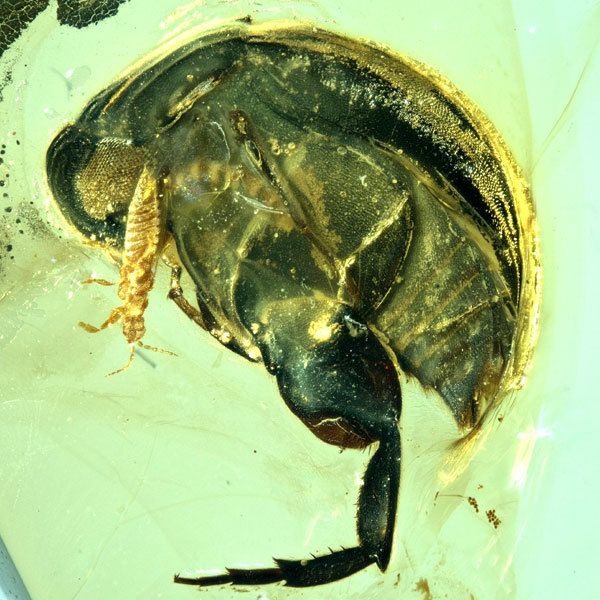- Decline Insect apocalypse
- Environment: Bees, against the ropes for climate change
A beetle preserved in amber from the Cretaceous, when dinosaurs dominated the Earth, has just provided valuable evidence on pollination processes in that era. The specimen, from 99 million years ago, belongs to a species hitherto unknown and has become the oldest pollinator of flowering plants that has been found.
Until now, the evidence of pollination in older floral plants dated to about 48 million years ago, so the new discovery, published in Proceedings of the National Academy of Sciences (PNAS), doubles its age. In fact, experts believe that there should be pollination of angiosperms (flowering plants) even earlier, but the difficult thing is to find the insect with its hands in the mass.
Coming from an amber field in Myanmar, Burma, the species has been baptized as Angimordella burmitina . Although extinct, it belongs to the family of bites, which are currently the most common flower visiting beetles on the planet.
The beetle fed on the flower pollen and part of it remained attached to its hair, from which scientists have now been able to recover 62 grains. "When I visited another flower, the pollen could fall on the stigma and result in a successful reproduction of the flower," explains paleontologist Bo Wang, a professor at the Chinese Academy of Sciences and one of the study's authors.
It is basically the same mechanism we find today in bees and many insects. "This form of angiosperm pollination could begin in the Aptian, about 125 million years ago, when the first real flower appeared," says Wang.
Although, if we also consider the pollination of gymnosperms (plants with the seed exposed, such as pineapples), we go even further back in time. A beetle found in an amber field in Álava showed evidence of having pollinated plants 105 million years ago, as a team of Spanish researchers discovered in 2017.
As explained by the scientist of the Geological and Mining Institute of Spain (IGME) Eduardo Barrón, author of both that study and several other findings of pollinating insects of the Cretaceous, pollen has also been discovered in the digestive system of insects of the even more distant Triassic, over 200 million years ago.
However, there is no direct evidence that, in addition to ingesting pollen, they will also transport it to other plants to aid its reproduction. In any case, "pollination is much older" than the insects trapped in amber have shown so far, says Barrón.
An ancient process ... and fundamental
The cases that, thanks to amber, have been documented, are important because they mark the transition from a predominance of gymnosperms, such as that documented by the Spanish deposits, 105 million years ago, to the progressive extension of angiosperms, which already it is found in Burmese amber, 99 million years ago.
Today, pollination is a necessary process for many of the world's plant species, including many of the most important in our diet: citrus, apple, pear or strawberry, among many others. Therefore, the disappearance of pollinating insects, often caused by the use of pesticides and herbicides, is dramatic, says Barrón.
Something in which Wang, from China, agrees: "Pollination is vital to maintain both natural ecosystems and human food security. However, pollinating insects face numerous threats, including changes in the use of earth, global warming, pesticides and pathogens, "he concludes.
According to the criteria of The Trust Project
Know more- science
- Science and Health
Environment This is how Spain is transforming climate change
ScienceChange of October October 2019: this weekend comes winter time
ScienceChange Time 2019: When Winter Time Enters Spain

